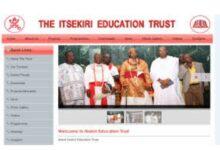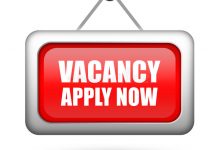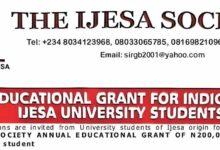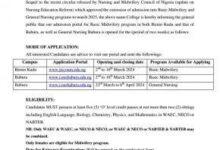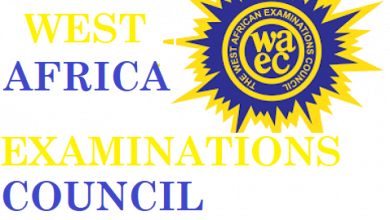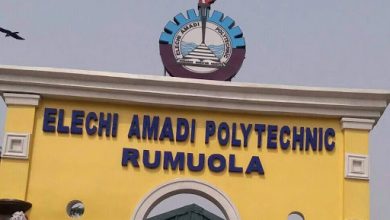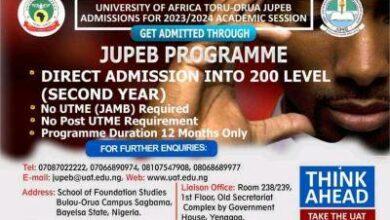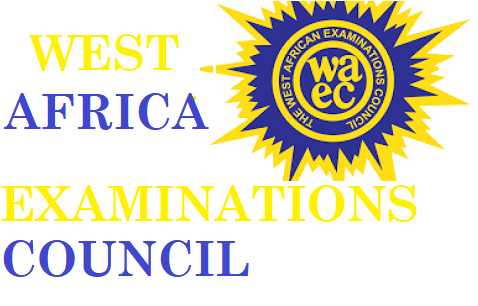
WAEC Syllabus for Upholstery
WAEC Syllabus for Upholstery. WAEC Syllabus for Upholstery is available for all candidates who want to participate in the examination. The West African examination council (WAEC) has officially introduced a syllabus that will guide all the WAEC candidates who wish to write the WAEC examination this year. For a very successful WAEC Upholstery examination for this year, you need to check out the available areas of concentration. It has been divided into sections with chapters, followed by the topics to be covered in preparation for the exams. In the WAEC Syllabus for Upholstery, you will also see the format of how the WAEC Upholstery questions will be presented. Pounds to Naira
There are 3 sections to answer questions from. Paper 1 is Objective and paper 2 contains essay questions and paper 3 is the practical section. Where paper one (1) carries 1 hour for 40 marks; paper two (2) carries 1 hours for 60 marks and paper 3 is 2 hour for 100 marks.
👉 Relocate to Canada Today!
Live, Study and Work in Canada. No Payment is Required! Hurry Now click here to Apply >> Immigrate to Canada
This WAEC syllabus is for both the O’level WAEC and General Certificate Examination (GCE) candidates. Final year students in the senior secondary school level and external candidates are eligible to make use of this syllabus and prepare ahead of the examination. WAEC Syllabus for Upholstery
See the full detailed information concerning the WAEC Upholstery Syllabus below.
SCHEME OF THE EXAMINATION
There will be three papers, Papers 1, 2 and 3, all of which must be taken.
Papers 1 and 2 shall be a composite paper to be taken at one sitting.
Paper 1: will consist of forty multiple-choice objective questions all of which are to be answered in 1 hour for 40 marks. Jamb Result
Paper 2: will consist of four short-structured questions. Candidates will be required to answer any three questions in 1 hour for 60 marks.
Paper 3: will be a practical test of 2 hours duration. It will consist of one question for 100 marks.
👉 Relocate to Canada Today!
Live, Study and Work in Canada. No Payment is Required! Hurry Now click here to Apply >> Immigrate to CanadaA list of material for the test shall be made available to schools not less than two weeks before the paper is taken for material procurement and relevant preparations.
ALTERNATIVE TO PRACTICAL TEST
The Council may consider testing candidates’ ability in practical work as prescribed in the syllabus in the event that materials for the actual practical test cannot be acquired. For this alternative test there will be one question to be answered in 2 hours for 100 marks.
DETAILED SYLLABUS
| S/NO. | TOPIC | CONTENT |
| 1 | Introduction to upholstery. | (a) Description of upholstery and upholstery articles; (b) Characteristics of upholstery workshops and articles; (c) Origin and styles of upholster. |
| 2 | Upholstery workshop safety. | (a) Safety: rules, regulations and precautions regarding clothing, habits, tools and materials, safety signs and posters; (b) Machine shop safety; (c) Safe use of machines, tools and devices; (d) Safe storage of tools, materials and equipment (e) Accident: meaning, causes and management techniques; (f) Fire: meaning, types, sources, equipment and methods of handling; (g) First aid: meaning, equipment and administration. |
| 3 | Upholstery tools and machines. | (a) Hand tools: types (e.g. hammers, needles, pair of scissors/shears, etc), identification, uses and maintenance; (b) Power tools: definition, types (staplers, buttoning machine, electrical cutter, glue gun, etc); (c) Machines: types (e.g. sewing machine, foam cutter, industrial machine), identification, parts, description, uses and specific maintenance |
| 4 | Upholstery materials. | (a) Description; (b) Classification (e.g. platform, padding/stuffing, covering, fasteners and fittings, etc); (c) Uses. |
| 5 | Upholstery design and drawing. | (a) Drawing principles; (b) Drawing instruments: types and uses; (c) Lines: types and uses; (d) Construction of plane figures and solids (e.g. triangles, ellipses, pyramids, shaped blocks); (e) Methods of presenting drawings (e.g. freehand sketching, orthographic projections, pictorial drawing, etc); (f) Design fundamentals (e.g. appearance, functionality, etc); (g) Design stages: problem identification, alternative solutions, selection of best alternative, production of: |
| working drawings, cutting list, estimates, workshop rod, template, etc. | ||
| 6 | Upholstery construction and repair. | (a) Types of upholstery construction: half upholstery, full upholstery; (b) Parts of upholstery works: frame, padding, covering (Identification, selection of materials); (c) Upholstery construction (Principles, processes, joints, standard sizes, parts relationships, setting out, cutting out, sewing, fixing, finishing, decorating; (d) Repair of faults in upholstery work: – Types (e.g. stains, tears breakages, etc). – Sources – Identification – Estimation – Repair. |
| 7 | Maintenance and repair of upholstery tools and machines. | (a) Types of maintenance (routine, preventive, corrective, diagnostic, etc); (b) Maintenance activities (cleaning, oiling, greasing, changing of parts, etc); (c) Importance of maintenance and repairs; (d) Tools, machines, equipment and materials; (e) Housekeeping; (f) Maintenance records. |
| 8 | Upholstery workshop management. | (a) Workshop environment: building, utilities, storage, facilities, etc.
(b) Workshop layout: types, facilities conveniences, etc. (c) Workshop personnel and their functions. (d) Tools, equipment and materials’ control: procurement, storage, issuing. (e) Workshop records (e.g. job card, tool card, stock cards, etc). |
| 9 | Introduction to entrepreneurship. | (a) Entrepreneurship: meaning and purposes;
(b) Characteristics of entrepreneurs; (c) Business organization: types and their characteristics, forming a business organization; (d) Sources of capital; (e) Careers and job opportunities; (f) Feasibility studies: meaning, content |
TOOLS, EQUIPMENT AND MACHINES
Hand Tools Equipment
- Hammers (30 No) Drawing sets (30 No)
- Pair of pincer (30 No) Tee squares “
- Pair of scissors (225 mm) (30 No) Drawing boards “
- Needles (30 No) Set squares “
- Staplers (30 No) Drawing curves “
- Ripping tools (30 No) Mechanical sharpeners “
- Webbing stretchers (30 No) Drawing templates “
Power Tools
- Jig saws. (5 No.)
- Electric staplers. “
- Glue guns. “
- Electric cutters. “
- Power screw drivers. “
- Pressing irons. “
- Drills. “
- Routers.
Machines
- Manual sewing machines (5 No)
- Drilling machine (2 No)
- Band saw (2 No)
- Circular saw (2 No)
- Ironing machine (2 No)
- Buttoning machine (5 No)
- Electric sewing machines (2 No)
List Of Materials
- 450 x380mm latex foam
- 750 x 560 mm soft synthetic leather
- 4000mm o3 cord
- 1 small roll matching colour sewing thread Dollar to Naira Rate
- 470 x 400mm calico
- 6mm upholstery staples
- 450 x 380mm 18mm plywood
Special Tools
- Manual Sewing Machine
- Portable Power Drill with appropriate bit
- Staple Gun.
SUGGESTED READING LIST
| S/NO. | AUTHOR | TITLE | PUBLISHER |
| 1 | C. Howes F. A. M. U. | Practical upholstery | Evans Brother Ltd. |
| 2 | John A. Walton | Woodwork in theory and practice metric Edition | Australasian Publishing Company |
| 3 | E. A. Nnenji | Principles of Woodwork design and drawing | Aranke Woods Lagos |
| 4. | H. C. Kazanas,
Roy S. Klein and John R. Lindbeck. |
Technology of Industrial materials | Chas A. Benneth Co. Inc. |
| 5 | Henry Sisk | Principles of Management | |
| 6 | Koontz and O’Donald | Principles of Management | |
| 7 | William F. Tierney | Modern upholstering methods. | Mcknight and Mcknight. |
| 8 | Argent Jeanne | Upholstgery, Step-by-step guide | Hamlyn, 1974 |
| 9 | Groneman, Christ H. | General Woodworking | McGraw Hill |
| 10 | Tinelife Books Npower Recruitment | The art of woodworking-building Cha | St. Mary Press |
| 11 | Tavntone books | Modern furniture projects. The best tine woodworking | Tavntone books |
Check and Confirm: How much is Dollar to Naira Pounds to Naira Rate Today
